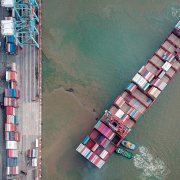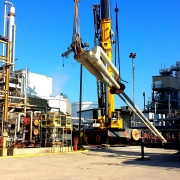How effective was ASEAN in maintaining regional security?
Topic of Study [For H2 History Students]:
Paper 2: Regional Conflicts and Co-operation
Source Based Case Study
Theme III Chapter 2: ASEAN (Growth and Development of ASEAN: Building regional peace and security)
The Bali Summit: ASEAN Concord and TAC
Following the Bali Summit in February 1976, member states of ASEAN cooperated and produced two key documents: The ASEAN Concord and the Treaty of Amity and Cooperation (TAC). These agreements were formed in the wake of USA’s withdrawal from Indochina following the end of Vietnam War in April 1975. ASEAN members expressed their concerns over regional security due to the incoming tide of communist expansion in the region.
The ASEAN Concord was created to promote regional economic cooperation for the primary aim of regional security. For instance, the Preferential Trading Arrangements (PTA) was introduced to encourage intra-ASEAN cooperation so as to meet the economic demands of their respective countries. In subsequent years, economic ministers of the member states held annual meetings to oversee this aspect of development.
The TAC was introduced to promote the principle of non-interference and non-use of force so as to address inter-state tensions and maintain regional security. It is imperative to note that this form of political cooperation applied not only to ASEAN member states, but also for non-ASEAN countries.
A Test of Time: Indonesia’s Invasion of East Timor [December 1975]
Following the decision of the Portugal to relinquish its control of ‘Portuguese Timor’ (before it was known as East Timor) in 1974, local elections were held. Two major political parties, the Revolutionary Front for an Independent East Timor (Fretilin) and the Timorese Democratic Union (UDT) unified to form a coalition. Yet, internal fighting broke out and the UDT carried out a coup. The Fretilin then declared East Timor independence on 28 November 1975.
The Indonesian government perceived the rise of the left-wing Fretilin as a threat to its doorstep. The Suharto administration feared the creation of a communist East Timor could destabilise Indonesia.
As such, the government launched Operasi Seroja (Operation Lotus) on 7 December 1975. It was a full-scale military invasion that toppled the Fretilin-led government. In July 1976, Indonesia declared East Timor as its twenty-seventh province, signalling a successful and forceful annexation.
Although the United Nations condemned the act, other countries such as Australia recognised the annexation. Furthermore, ASEAN members regarded the political developments as a domestic issue, thus explaining their inaction. A more critical interpretation is that the ASEAN Way hamstrung the member states from criticising and antagonising Indonesia, given the strict adherence to the principle of non-interference.
A Role Model: ASEAN’s Response to the Vietnamese Invasion of Cambodia [December 1978]
In contrast to the East Timorese crisis, ASEAN demonstrated the effectiveness of its regional unity to the world by taking the lead in condemning the Vietnamese invasion of Cambodia.
In 1988, ASEAN facilitated the Jakarta Informal Meetings (1988-1990). It involved the disputing parties such as the Coalition Government of Democratic Kampuchea (CGDK) and the People’s Republic of Kampuchea (PRK). Notably, these closed-door meetings provided effective as a platform for conflict resolution.
ASEAN’s efforts had paid off after the great powers followed up with the signing of the Paris Peace Agreement on 23 October 1991 that marked the official end of the war.
However, it is also important to consider the improvements in the political climate by the mid-1980s that explained the successes of ASEAN’s diplomatic efforts. In particular, the willingness of Soviet Union and China to engage in political discussions to pressure Vietnam’s withdrawal was a vital factor.
Also, ASEAN’s decision to take the side of the USA and China in condemning Vietnam’s aggression conflicted with the principles of the Zone of Peace, Freedom and Neutrality (ZOPFAN), since ASEAN initially rejected interference by external powers.
Concluding Remarks: Was ASEAN effective?
In view of these two case studies, we can conclude that ASEAN was faced with challenging circumstances to address various threats to regional security – ideological subversion and political interference. Therefore, some political leaders, historians and political observers have reconciled with these perceived contradictions to argue that certain conflicting actions were deemed necessary to achieve regional consensus.
What can we learn from this article?
Consider the following question:
– Assess the political effectiveness of ASEAN in response to the Third Indochina War [to be discussed in class].
Now that you have examined the case studies to analyse the applications of ASEAN’s political cooperation, it is important to attempt source-based case study questions for knowledge application. Join our JC History Tuition and learn to form logical arguments. We conduct essay writing and source based case study skills workshops to guide you through the writing process. More importantly, we teach you how to organise your points to complete these questions within the given time frame.
The H2 and H1 History Tuition feature online discussion and writing practices to enhance your knowledge application skills. Get useful study notes and clarify your doubts on the subject with the tutor. You can also follow our Telegram Channel to get useful updates.
We have other JC tuition classes, such as JC Math Tuition and JC Chemistry Tuition. For Secondary Tuition, we provide Secondary English Tuition, Secondary Math tuition, Secondary Chemistry Tuition, Social Studies Tuition, Geography, History Tuition and Secondary Economics Tuition. For Primary Tuition, we have Primary English, Math and Science Tuition. Call 9658 5789 to find out more.











